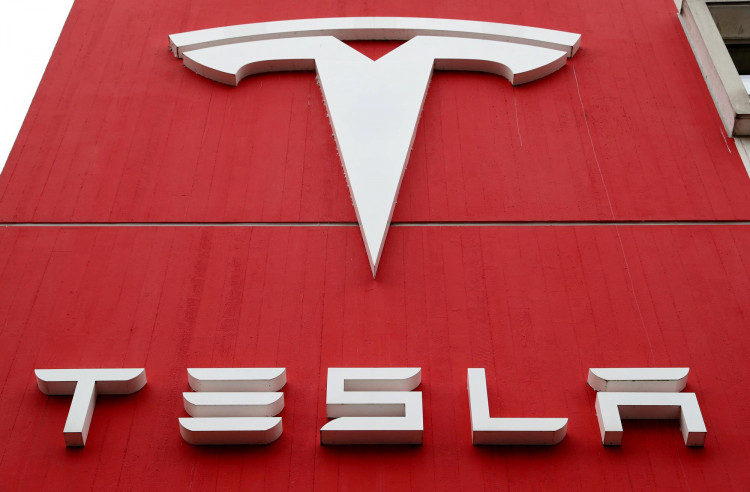Tesla, the global frontrunner in new energy vehicles, released its Q2 financials on July 20. Among key indicators, the company's operational revenue hit a record $24.927 billion, a 47% increase YoY, exceeding the market's overall forecast of $24.3 billion.
However, Tesla's profit and gross margin have both continued the decline seen in the previous quarter. Operating profit was $2.399 billion, down 3% YoY and 9.9% QoQ; the gross margin was 18.2%, a 6.8 percentage point decrease YoY and a 1.1 percentage point decrease QoQ.
Wall Street sees the first half of this year as a time of frequent price wars in the new energy vehicle market, with emerging manufacturers facing fierce competition. As a prime mover of these price wars, Tesla, although substantial in size and profitability, has not waged these battles without cost.
The sharp contrast and disparity between record-breaking vehicle sales and operational revenue, and repeatedly low profit and gross margin are worth noting.
After experiencing a rise in sales but simultaneous drop in profit and gross margin in Q1 - a "double-edged sword" - Tesla made few adjustments in Q2, leading to continued high sales but reduced profitability.
Of interest, Tesla further reduced the prices of its Model S and Model X vehicles at the start of Q3. Apparently, even though profitability suffered, Tesla still upheld its "sales first, profit second" strategy throughout the year.
Sales is Tesla's Top Priority
This year, Tesla's strategy has been completely transparent; before new models can hit the market and drive growth, maintaining sales volume through price reduction is an important means for Tesla to achieve this year's sales targets.
Reviewing Tesla's sales after reducing prices at the start of the year, the price reduction strategy has been surprisingly effective. In the first half of this year, Tesla produced a total of 921,000 units, a 63.2% increase YoY and a 14.3% increase QoQ. The sales volume reached a high of 889,000 units, a 57.4% increase YoY and an 18.7% increase QoQ, setting a new sales record for two consecutive quarters. The effects of a price reduction by traditional car companies typically only last a quarter, but the increase in sales from Tesla's price cuts extended into Q2, and its YoY and QoQ sales growth in Q2 even exceeded that of Q1, when the price cuts were first introduced.
With last year's total sales reaching around 1.31 million units, Tesla was somewhat short of its 1.5 million units target. However, Tesla is likely to hit that target this year. The second half of the year has traditionally been the peak season for the auto market. Based on Tesla's sales data last year, sales in the second half increased by 32.6% QoQ.
If Tesla maintains this growth rate in sales volume this year, the company is expected to sell around 2 million units in total this year, exceeding its previous target of 1.8 million units.
Sales Volume is Stable, But At What Cost?
While Tesla has indeed stabilized its sales volume, it hasn't come without a price.
Tesla was criticized by the market in Q1 for a significant drop in profit and gross margin. In Q2, Tesla's profitability continued to decline, even as it set record highs in vehicle sales and operational revenue. Most notably, its largest automotive sector took the biggest hit.
In Q2, Tesla's automotive revenue maintained positive growth, reaching $21.3 billion, a 45.9% increase YoY. However, the profit and gross margin of the automotive sector has been on the decline for five consecutive quarters, with the gross margin breaking the 20% barrier. Additionally, as a result of Tesla's aggressive price cuts at the start of the year, per vehicle revenue declined significantly, falling to $45,700, a nearly $10,000 drop YoY and a decrease of about $2,000 QoQ, the lowest point in the past three years. Meanwhile, Tesla achieved an operating profit of $2.399 billion in Q2, a 3% decrease YoY and a 9.9% decrease QoQ. Although Tesla's other business segments, like energy, not only did not decline but grew rapidly (a 74% increase YoY), the failure of the core automotive business to grow profit led to an overall underwhelming performance.
The main reason for this lies in the fact that the decrease in the price of automotive products far exceeds the decrease in costs. For example, in China, Tesla's price cuts ranged from ¥29,000 to ¥36,000, about a 10% drop, while the major cost reductions in the first half of this year were due to a significant drop in the price of lithium carbonate, a key raw material.
Battery-grade lithium carbonate prices have dropped from a peak of ¥600,000/ton in mid-November last year to a low of ¥180,000/ton, currently stabilizing at around ¥300,000/ton.
Taking Tesla's best-selling Model Y regular model (with lithium iron phosphate battery) as an example, its charging capacity is 60 degrees. 1GWh of power battery can meet 16,700 units, and converted to lithium carbonate, 1GWh of lithium iron phosphate battery needs 510 tons of lithium carbonate.
The average prices of battery-grade lithium carbonate in Q4 last year, Q1 and Q2 this year were about ¥550,000/ton, ¥450,000/ton, and ¥250,000/ton, respectively. This means that the average price of lithium carbonate has dropped by about ¥300,000 in half a year. Converted to the cost of Tesla's new energy vehicle products, the maximum cost reduction is about ¥9,000, far less than the decrease in the price of Tesla's products.
Energy and service businesses continue to maintain high growth and are expected to create a second curve of profitability.
Tesla's core automotive business is on a downward trajectory, but its other two major businesses, energy and services, continue to thrive. Tesla's energy business mainly includes energy storage and photovoltaics, serving both residential (C-end) and commercial (B-end) customers. In the second quarter of this year, the service business's operating revenue reached $1.5 billion, a year-on-year increase of 74%, far surpassing the automotive business. Both the growth rate and operating income set a new record, and the gross profit margin rose rapidly to a record 18%.
The rapid development of the energy business is also due to Tesla's emphasis on energy storage. In the long run, Tesla has planned five energy storage factories worldwide, with a total planned capacity of up to 150GWh.
In the short term, with the further increase in output of Tesla's Megapack energy storage battery factory in California and the construction of a 40GWh energy storage factory in Shanghai, Tesla's energy business is expected to grow further.
In addition, Tesla's service business is also in a steady upward trend. The service business mainly includes used car transactions and charging pile services.
This year, Tesla officially opened its charging piles to other automakers. Leading companies such as Volkswagen, General Motors, and Ford have chosen to cooperate. This means that more automotive products can connect to Tesla's charging network, promoting the development of Tesla's charging pile business.
At present, Tesla's charging pile business is taking off, with service business operating income reaching $2.15 billion in the second quarter, a year-on-year increase of 47%. It has achieved positive growth for five consecutive months, and the gross profit margin has been continuously growing since it turned positive, currently reaching 8%.
Will Tesla's sales-driven strategy change?
Tesla's gross margin has never fallen below the 20% mark in the past three-plus years, but it has been below 20% for two consecutive quarters this year. In the first and second quarters of this year, Tesla's gross margins were 19.3% and 18.2%, respectively.
In the short term, Tesla's profitability has obviously been hit, but Tesla does not intend to change its sales-driven strategy. As Musk said, if the economic environment continues to deteriorate, Tesla will continue to lower car prices to ensure sales.
At the beginning of the third quarter, Tesla blew the horn of price reduction for the second half of the year and announced a discount of 35,000 to 45,000 yuan for its high-end Model S and Model X models, reducing prices by 5% again.
Clearly, Tesla is still willing to sacrifice profitability to ensure high sales growth. The main reasons are twofold:
On the one hand, although Tesla's gross margin and profit level have suffered two rounds of declines, it is still much better than its competitors like NIO and XPeng, whose gross margins are close to zero. After all, Tesla's gross margin can still hover around 18%, maintaining a good money-making effect, and it's not a loss-making strategy.
Of course, Tesla's price war not only impacts Chinese new energy car companies but also significantly affects American domestic car companies. In the first half of this year, the average price of new energy vehicles in the United States fell continuously, from $61,000 in January to $53,000 in June, a drop of 13%. Compared with $66,000 in June last year, it dropped 19.5%.
On the other hand, Tesla's fundamental strategy still adheres to setting sales by capacity. It expands the scale of new energy vehicle sales to grow its overall stock level and then uses gradually stronger FSD and charging pile services to make up for its profitability and gross margin level. It is indeed the right strategy in the long run.
However, in the short term, even without considering Tesla's planned super factory in Mexico, the total capacity of Tesla's four major factories - the Fremont Factory in California, the Shanghai Gigafactory, the Berlin Factory in Germany, and the Austin Factory in Texas - is expected to reach 2 million vehicles/year.
The rapid increase in Tesla's production capacity has shortened the delivery cycle to about four weeks. If the capacity is not discounted, then price cuts to maintain volume are inevitable. Therefore, a gross margin drop below 20% is not unacceptable for Tesla.
Especially today, when Tesla's new models are still not on the market and consumers are gradually getting aesthetically fatigued with old models, Tesla's price reduction strategy can both boost its own sales and benefit consumers, as well as hit its competitors and enhance its competitiveness and market share.
Tesla will not let short-term profit losses affect the big picture in the future.





